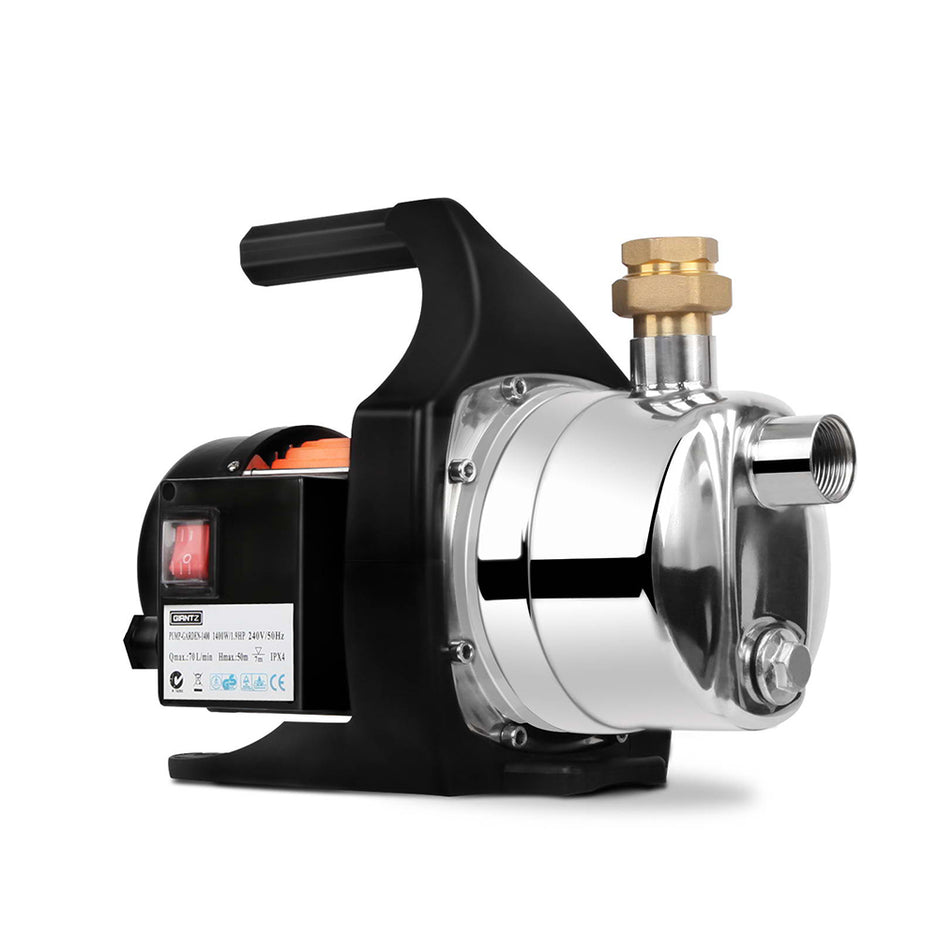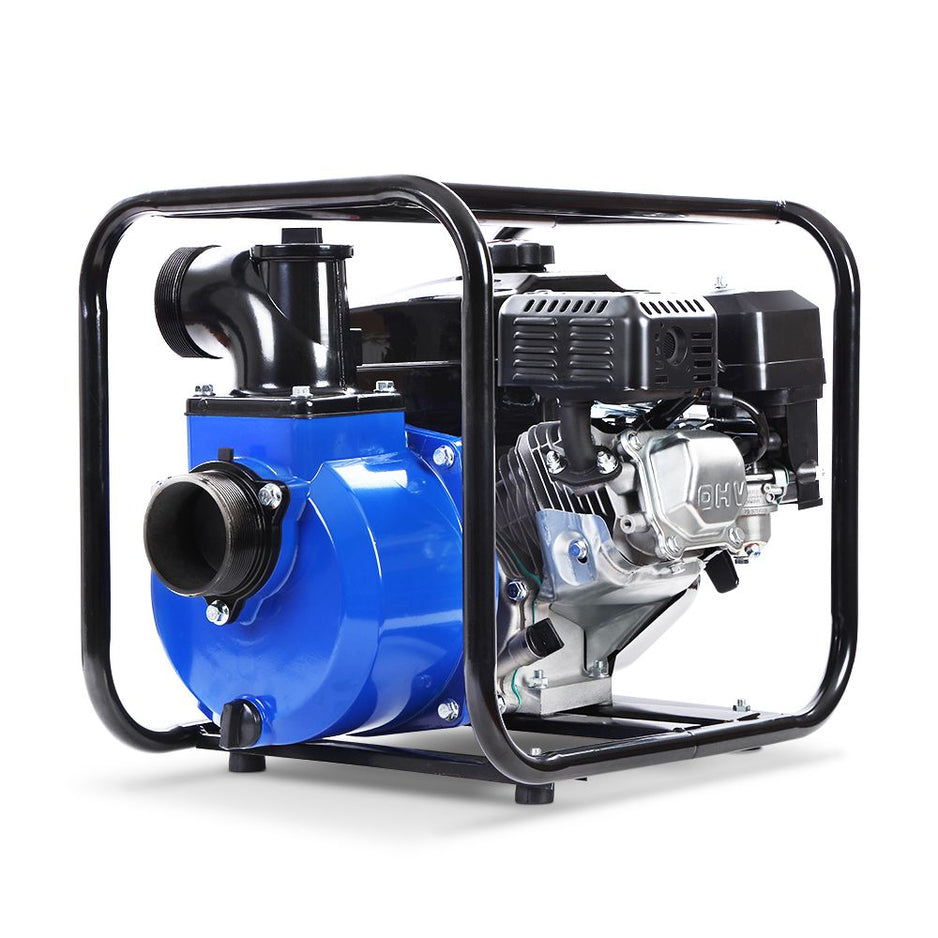sales@tecnotools.com.au
sales@tecnotools.com.au
Call us: 0433 734 100

Water pumps are the unsung heroes of modern civilization, silently ensuring the flow of water for various purposes, from irrigation to industrial processes and residential use. While often overlooked, advancements in water pump technology have played a crucial role in improving efficiency, reducing energy consumption, and promoting sustainability. In this blog post, we'll explore some of the latest innovations in water pump technology and their implications for a more sustainable future.
One of the key areas of innovation in water pump technology lies in design improvements aimed at enhancing efficiency. Traditional water pumps often suffer from inefficiencies due to factors such as friction losses and hydraulic losses. However, modern pumps are designed with precision engineering techniques and advanced materials to minimize these losses and maximize performance.
For example, manufacturers are increasingly utilizing computational fluid dynamics (CFD) simulations to optimize pump designs for improved flow characteristics. By analysing fluid dynamics within the pump, engineers can identify areas of inefficiency and refine the design to achieve better performance.
Additionally, advancements in materials science have led to the development of more durable and corrosion-resistant materials for pump components. This not only extends the lifespan of the pumps but also reduces maintenance requirements and improves overall reliability.
The integration of smart technologies is another significant trend in water pump innovation. Smart pumps leverage sensors, data analytics, and automation to optimize operation and reduce energy consumption.
These pumps are equipped with sensors that monitor various parameters such as flow rate, pressure, and energy usage in real-time. The data collected by these sensors is then analyzed using advanced algorithms to identify opportunities for optimization.
For instance, smart pumps can adjust their speed and output based on demand, ensuring that they operate at peak efficiency under varying conditions. This not only reduces energy consumption but also prolongs the lifespan of the pump by minimizing wear and tear.
Smart pumps enable remote monitoring and control, allowing operators to manage pump performance and detect issues proactively. By promptly identifying and addressing potential problems, downtime and maintenance costs are minimized, contributing to overall operational efficiency.
In recent years, there has been a growing emphasis on sustainability in water pump technology, driven by concerns over energy consumption and environmental impact. As a result, manufacturers are increasingly turning to renewable energy sources to power water pumps.
Solar-powered pumps, for example, have gained popularity in remote or off-grid locations where access to electricity is limited. These pumps utilize photovoltaic panels to convert sunlight into electricity, providing a clean and sustainable energy source for water pumping applications.
Similarly, wind-powered pumps harness the power of the wind to drive pumping mechanisms, offering another eco-friendly alternative to traditional fuel-powered pumps.
By embracing renewable energy solutions, water pump systems can significantly reduce their carbon footprint and dependency on fossil fuels, contributing to global efforts to combat climate change.
High-pressure water pumps are utilized across a diverse range of industries and applications due to their ability to generate and deliver water at significantly elevated pressures. Some of the primary uses of high-pressure water pumps include:

Industrial Cleaning: High-pressure water pumps are extensively used for industrial cleaning purposes. They can effectively remove dirt, grime, grease, and other contaminants from surfaces, equipment, machinery, and infrastructure. Industries such as manufacturing, automotive, food processing, and construction rely on high-pressure water pumps for tasks like surface preparation, paint stripping, equipment sanitation, and degreasing.
Water Jet Cutting: In manufacturing and fabrication processes, high-pressure water pumps power water jet cutting systems. These systems employ pressurized water streams, often mixed with abrasives, to cut through various materials such as metal, stone, glass, ceramics, and composites. Water jet cutting offers precision cutting with minimal heat-affected zones, making it suitable for intricate designs and materials sensitive to high temperatures.
Firefighting and Emergency Response: High-pressure water pumps are vital in firefighting and emergency response operations. Fire departments and emergency services utilize them in fire suppression systems, fire trucks, and mobile firefighting units to deliver water at high pressure to extinguish fires, control hazardous situations, and provide cooling in industrial emergencies or wildfires. High-pressure water pumps enable firefighters to access water sources from hydrants, reservoirs, or natural bodies of water efficiently.
Hydrostatic Testing: High-pressure water pumps play a crucial role in hydrostatic testing procedures used to assess the structural integrity of pipelines, pressure vessels, tanks, and other pressure-containing components. These pumps create pressure within the system by delivering water at high pressure, allowing engineers to test for leaks, verify pressure ratings, and ensure compliance with safety standards and regulations.
Water Blasting and Hydrodemolition: High-pressure water pumps are employed in water blasting and hydrodemolition applications for surface preparation, concrete removal, and demolition tasks. Water blasting techniques use high-pressure water jets to remove coatings, scale, corrosion, and unwanted materials from surfaces without causing damage to underlying substrates. Hydrodemolition utilizes high-pressure water to selectively remove concrete from structures, bridges, roads, and other infrastructure components, providing a precise and controlled method for repair and renovation.
Pressure Washing: High-pressure water pumps are commonly used in pressure washing equipment for residential, commercial, and industrial cleaning applications. Pressure washers deliver pressurized water streams for cleaning exterior surfaces, sidewalks, driveways, vehicles, machinery, and building facades, offering an efficient and environmentally friendly solution for dirt and stain removal.
4-stroke engine water pumps, also known as water transfer pumps, are versatile machines used primarily for transferring water from one location to another. They are commonly powered by a 4-stroke gasoline engine, which provides the necessary energy to drive the pump mechanism. These pumps are utilized across a wide range of applications due to their portability, ease of use, and ability to handle various water transfer tasks efficiently. Some of the key uses of 4-stroke engine water pumps include:

Agricultural Irrigation: Farmers and agricultural workers rely on 4-stroke engine water pumps to irrigate crops by transferring water from a water source, such as a pond, stream, or well, to fields or irrigation systems. These pumps are often mounted on trailers or portable frames, allowing for easy transportation and deployment in remote or field locations where access to electricity may be limited.
Construction and Dewatering: In construction sites, 4-stroke engine water pumps are used for dewatering excavations, trenches, and building foundations. They help remove excess water to maintain a dry working environment and prevent flooding, facilitating construction activities such as concrete pouring, pipe laying, and foundation work. Portable and lightweight models are favored for their ease of handling and mobility around job sites.
Emergency Water Transfer: During emergency situations such as floods, hurricanes, or natural disasters, 4-stroke engine water pumps play a critical role in transferring water for drainage, flood control, and emergency response efforts. Emergency responders, disaster relief agencies, and homeowners may use these pumps to remove water from flooded areas, basements, or properties to prevent further damage and ensure safety.
Pond and Pool Maintenance: Homeowners, landscapers, and property managers use 4-stroke engine water pumps for maintaining ponds, swimming pools, and water features. These pumps are employed to circulate water, remove debris, and clean out sediment buildup, helping to maintain water quality and clarity. They are also used for emptying or refilling pools and ponds during maintenance or renovation activities.
Water Transfer and Supply: 4-stroke engine water pumps are utilized for general water transfer and supply applications, such as filling water tanks, cisterns, or storage containers, and transferring water between different locations or reservoirs. They are commonly used in rural areas, remote sites, and off-grid locations where access to municipal water supply infrastructure may be limited.
Firefighting Support: While not typically used as primary firefighting equipment, 4-stroke engine water pumps can serve as auxiliary pumps to supply water to firefighting operations in areas with limited access to hydrants or water sources. They may be deployed on fire trucks, tanker trucks, or portable firefighting units to provide additional water transfer capabilities and support firefighting efforts.
Innovation in water pump technology continues to drive improvements in efficiency, reliability, and sustainability. From advanced design techniques to the integration of smart technologies and renewable energy solutions, the latest developments in this field hold promise for a more sustainable future.
As the demand for water continues to rise and environmental concerns escalate, the importance of innovative water pump solutions cannot be overstated. By embracing these technologies, we can ensure the efficient and responsible management of this precious resource for generations to come.